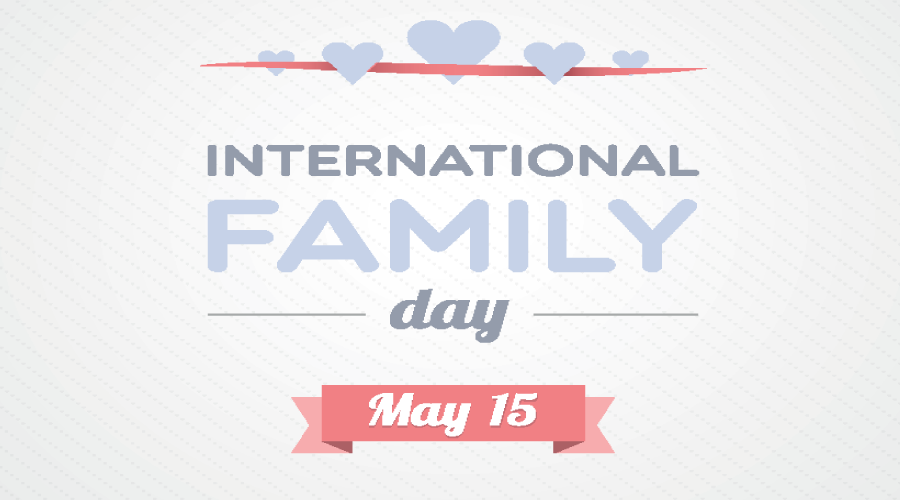

May 15, as declared by the United Nations General Assembly in its resolution of September 20, 1993, is celebrated as the International Day of Families. May 15 was chosen as the International Family Day in 1994 because the United Nations believed that it was important to recognize the value of families. This day is celebrated to draw attention to the important matters essential to the welfare of families such as rights for children, education, health, social presence, gender equality, etc.
Significance of International Day of Families
In society, the family is the basic unit. The International Day of Families provides an opportunity to spread awareness about family issues and increase knowledge regarding economic, social, and demographic processes that affect families.
In the 1980s, the United Nations started focusing on family-related issues. In 1983, the Commission for Social Development, on the recommendations of the Economic and Social Council, requested the Secretary-General to improve the alertness of the public and the decision-makers, directing them to the needs of families and how to fulfil those needs.
Finally, in 1989, the International Day of the Family was declared by the General Assembly to be celebrated on May 15 every year. 193 member states of the United Nations, on September 25, 2015, unanimously adopted the Sustainable Development Goals directed toward eliminating discrimination, abuse, poverty, environmental destruction, and preventable deaths in an era of development. Family-oriented policies were very important for the accomplishment of such goals.
2022 Theme for International Day of Families
The International Day of Families is a powerful mustering factor for families of all countries. This year’s theme for the International Day of Families is “Families and Urbanisation”. Urbanisation is seen as one of the most important megatrends that shape life, well-being, and the world of families worldwide. This theme seeks to boost awareness of the importance and value of family-friendly and sustainable urban policies.
In today’s world of excess social media and screen time, people have become less social in ways that are beneficial and essential to their physical and mental well-being. The American Journal of Health Promotion conducted a study that revealed – excess time spent on social media is one of the major risk factors for loneliness.
Spending quality time with family and loved ones is proven to help deal with loneliness, anxiety, and stress, leading to a healthy lifestyle. Spending time with family increases satisfaction and happiness. Families provide unconditional support and love which helps with the overall mental health of all the members of a household.
A family makes us who we are, who we really turn out to be. Family isn’t restricted to just blood relatives. Friends can be family too. As kids get older, spending time with them gets more challenging with all the work commitments and life changes.
Ways to Spend Time with Family
Here are some ways of spending quality time with family while managing your life simultaneously:
1. Make Time
Even if it’s just once a week, family time is for bonding and togetherness. It can either be a game night, a movie night, dining out, or a stay-in family dinner, etc. The important aspect is to spend time with your family.
2. Help with Household Chores
It’s not fair if all chores are to be done by just one person. Have a family meeting and assign each member some chores. This will help loosen up the burden on one person and lead to building a sense of responsibility and independence.
3. Mutual Support
If you have multiple kids and they are involved in some kind of extracurricular activities, have your other kids cheer them whenever they can.
4. Family Downtime
Mark at least one day a month where all family members are to disconnect online and connect offline. A technology-free day. Such a day can be helpful to unwind and let go of things that bother you.
5. Go on a Family Vacation
Vacations are a great way to spend quality time together. Vacations help break away from the otherwise hectic routine while exposing you to new activities, people, food, and locations.
6. Family Project
It can be anything from building a treehouse to reading a couple of books a year, collecting something, volunteering at the local food/animal shelter, etc. Committing to family only on holidays and vacations is not enough. Time commitment may not be huge, but it needs to be consistent because you need time to develop deep, meaningful, and lasting bonds.
Health Benefits of Spending Time with Family
Spending time with family has a lot of health benefits too:
1. Mental Health Improvement
Making face-to-face communication reduces the rate of anxiety, depression, and other mental illnesses.
2. Better Academic Performance
On average, kids who spend more time with family tend to do better in school. Moreover, they are better at communicating and conveying their needs.
3. Less Behavioural Problems
Children who spend more time with family show reduced risk of behavioural issues such as substance abuse, anger, and violence. To a child, family is very important as your advice allows them to cope better with problems and helps them to make positive choices.
4. Parenting Skills
Kids learn through their parents’ behaviour toward each other, how they treat each other and how much they respect each other. Through them, they learn how to treat others.
5. Adaptability and Resilience
A child’s ability to face life’s challenges and changes is improved by having a strong bond with family. It gives you the feeling that you are cared for, you are needed, and you belong, which gives a child a sense of purpose and meaning. This assurance provides motivation to grow, push forward, and succeed in life.
Conclusion
The family is society’s smallest building block and plays the most important role in a person’s life. The familial relationships contribute to a safe atmosphere for an individual’s development. This International Day of Families, make sure you spend time with your loved ones and remind others to respect these special bonds.




